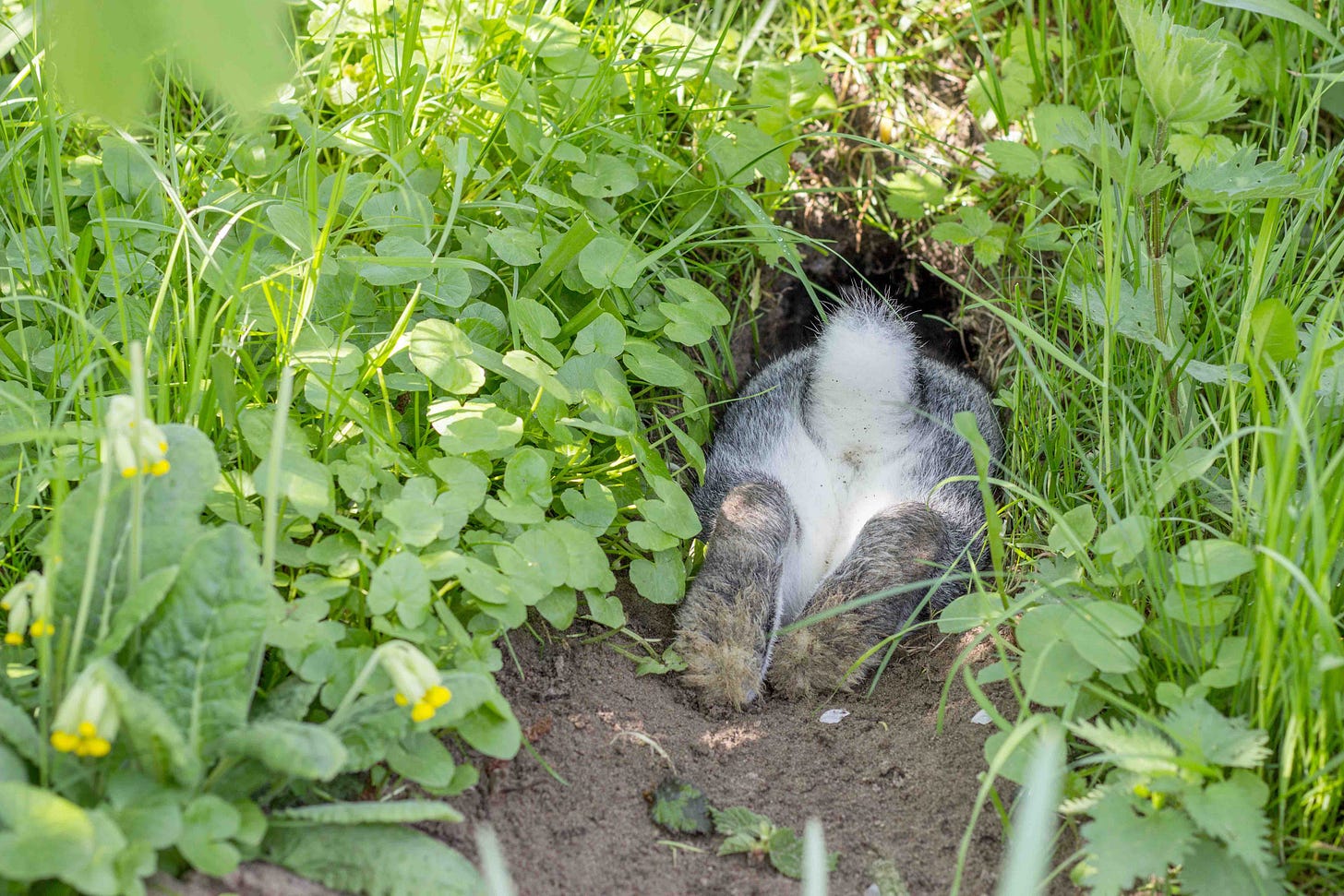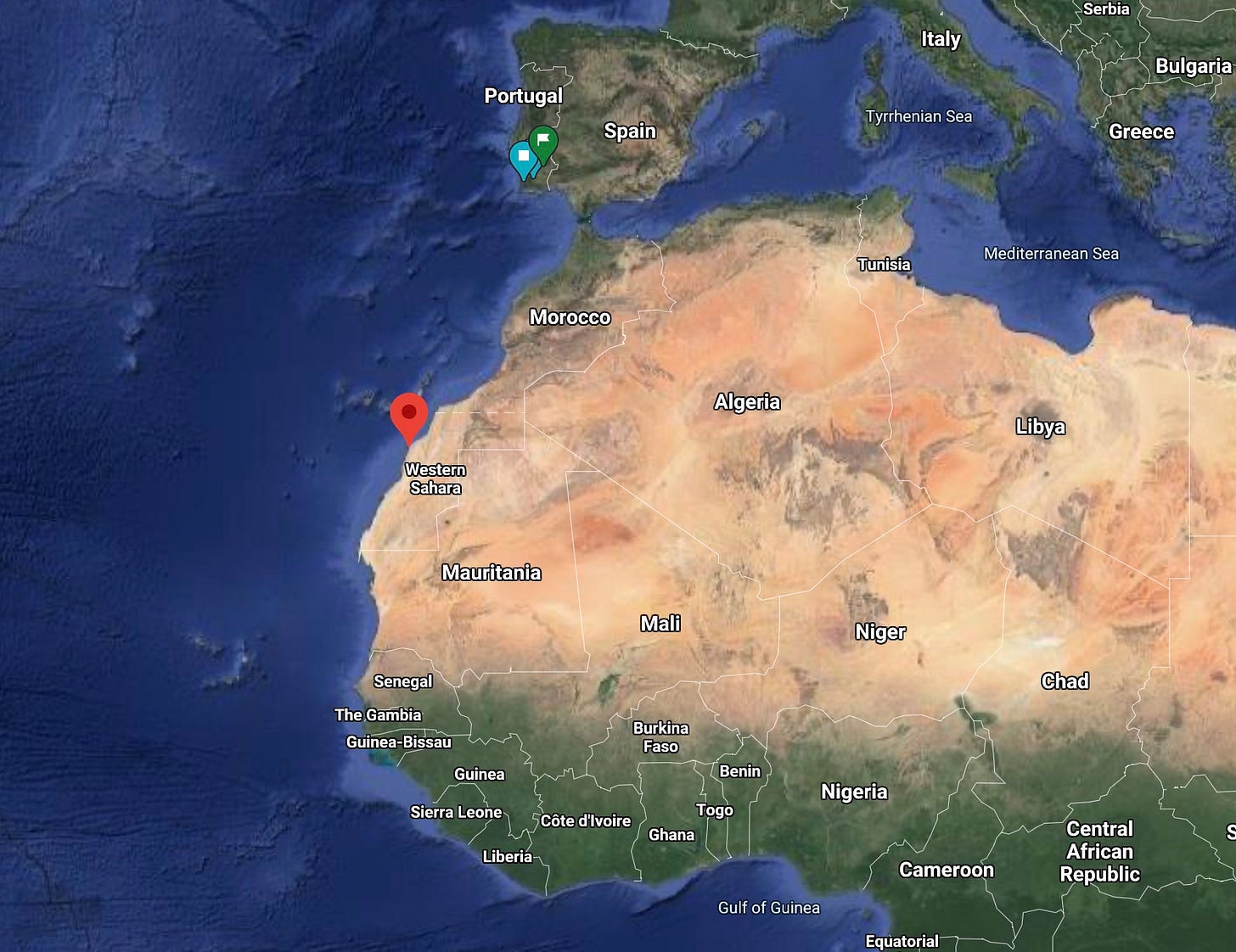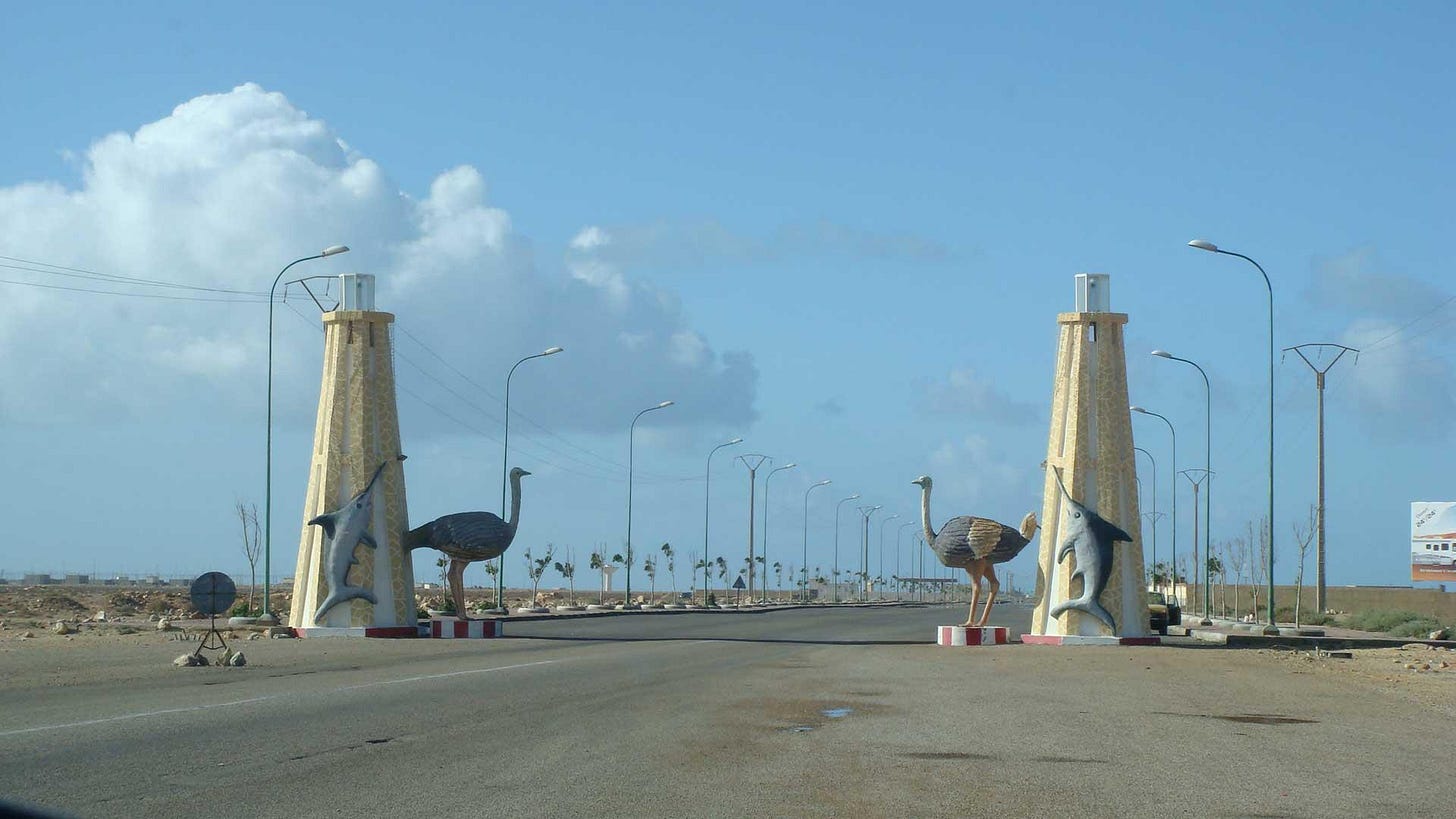There’s a fine line between research and distraction, but the job title of Portugal Trainee gives me a lot of leeway.
Regular descent into rabbit holes comes with the role – and on rainy lockdown days I tend to disappear down a lot of them.
Some are useful (solar charge controllers & micro-hydro systems), a few go upwards and are harder to climb (Portuguese language practice), but most are trap doors to procrastination, and I love this one particularly.
It’s the story of rounding the Cape…not the Cape of Good Hope, the Cape of Storms, or Cape Horn…but the Cape of Bojador.
It’s the story of how a small bump on the coast of today’s Western Sahara once stopped European explorers in their tracks and marked the beginning of the end of the world.
I’ve read a lot about Portugal’s “Age of Discovery”…and even want us to buy a llama, simply so we can call it Vasco (the llama), but I hadn’t heard about this Cape before.
It was a first major obstacle that had to be overcome.
In the early 15th century, no European explorer heading down the west coast of Africa had ever passed Cabo Bojador and returned.
Beyond that point the ocean became rough and there were myths of monsters and that the “sea boiled.”
As a student of geography my first move was to check a map.
Boujdour, as it is known today, doesn’t look like much. It’s described as a small fishing town by the Moroccan Tourist Board and although being in the disputed territory of Western Sahara, also hosts a Moroccan military base.
There aren’t many photos online, but the one I found asks more questions about the relationship between ostriches and swordfish than it answers.
So why was this innocent looking bulge in the Sahara such a place of fear, myth and legend?
Back to the geography…
The first thing is that the wind changes after Cape Bojador: a steady north-easterly blows year-round and combined with a southward current could have panicked the old navigators following close to the coast and being driven into the unknown.
The second is how treacherously shallow it is: the sea is just 2m deep for up to three miles from land and there are reefs and rocks.
Many ships have been wrecked along this coast including the American vessel Commerce in 1815. The story of its crew was told in Skeletons on the Zahara: A True Story of Survival by Dean King.
Now ships with modern navigation travel much further out to sea to catch much more favourable winds.
But I love the explanation for the boiling seas.
Firstly, waves striking the reef would throw up clouds of water that would look like steam from afar.
Hot offshore winds from the Sahara Desert and poor visibility from blowing sand would add to the impression.
But it’s the shoals of fish that do it for me – and there are a lot of fish off this coast.
When sardines are forced up to the surface by larger fish like tuna feeding below, they not only make the sea look like it’s bubbling, but their flapping adds to the sound effects.
Check out this great clip (available in the UK only) from Blue Planet II – yup, I can see why they’d be afraid!
Portuguese Captain Gil Eanes had tried and failed to round the Cabo in 1433, but survived and finally made it through in 1434 after being pushed to try again by Henry the Navigator – the man credited with much of Portugal’s maritime achievements.
This changed everything.
It proved that the world existed beyond, laid a path for Vasco de Gama and Bartholemew Dias and their ilk…and ushered in both the Age of Discovery…and the beginning of the Atlantic Slave trade.
Quem quer passar além do Bojador / Tem que passar além da dor.
(Who wants to pass beyond Bojador / Must also pass beyond pain)
Fernando Pessoa: Mensagem (Mar Português)
They say the winners write the history books, and the further back you go the more wiggle room there is…or should I say the greater the storytelling potential.
There’s archaeology, old maps and manuscripts, but layers of myth and legend come with the territory and stories can be finessed, often without being challenged.
I’ve been reading 1421: The Year China Discovered the World by former British submariner Gavin Menzies.
It’s a fascinating story about a Chinese age of maritime expeditions pre-dating Europe’s, with lots of apparent evidence.
His best-seller from 2004 explains navigating with ocean currents and the stars and makes a strong case.
He claims Chinese maps were passed on to the Portuguese to aid their expeditions, but it’s been dismissed by many historians as not providing enough evidence to challenge the historical status quo.
I’m dipping in and out of it at the moment and will report back, but it’s good to remember that just because it’s a good story doesn’t mean it’s true!
Portugal’s Age of Discovery is much celebrated – not least by the stone monument to the explorers on the Tagus River in Lisbon from where the ships used to depart.
It has Henry the Navigator at its head and was inaugurated in 1960 to mark the 500th anniversary of his death.
The narrative fitted in with a romantic and triumphalist image of the Age of Discovery encouraged under Salazar’s autocratic republic, but is challenged by historians.
Was Prince Henry the Navigator really Prince Henrique the Misadventurer, asks the author Martin Page in his excellent First Global Village.
He traces the whole legend of Henry to a book by a British author written in 1868 and questions many things including whether any great School of Navigation at Sagres ever existed.
Martin Page credits him for being the “midwife” of the slave trade but adds for the new generation of Portuguese historians it has not been about “de-bunking past heroes,” but “to attribute it to those truly outstanding figures who carried it out.”
It’s a great reminder that what fills our history books isn’t always an objective account.
There’s something about the ocean, the stars and exploring the world that has always appealed to me, so it’s perhaps not surprising I have ended up living here.
And if voyages of discovery these days are down internet rabbit holes, so be it…I do like the idea of taking all that new knowledge and sharing it…and that’s where the storytelling comes in.
My current favourite rabbit hole is Portuguese vineyards. I’m spending a lot of time on the theory…and am very much looking forward to diving head first into the practical.
* By the way, I stumbled across the story of Cabo Bojador in Frommer’s travel guide to Portugal – inspired to check it out after realising ex-BBC editor Peter Barron had co-written Frommer’s Spain.
Peter’s also made a life pivot (via Google communications) to the Extremadura region of Spain just over the mountains from us here in Alentejo.
His blog is a fabulous series of despatches on life and history and renovating a barn…all beautifully illustrated by Andy Teare’s photography. Check it out!










I love stories of internet rabbit holes, I find myself doing it every day. Usually interesting, never boring.
Roger Crawley’s ‘The Conquerers’ is also well worth a read if you haven’t read it yet.